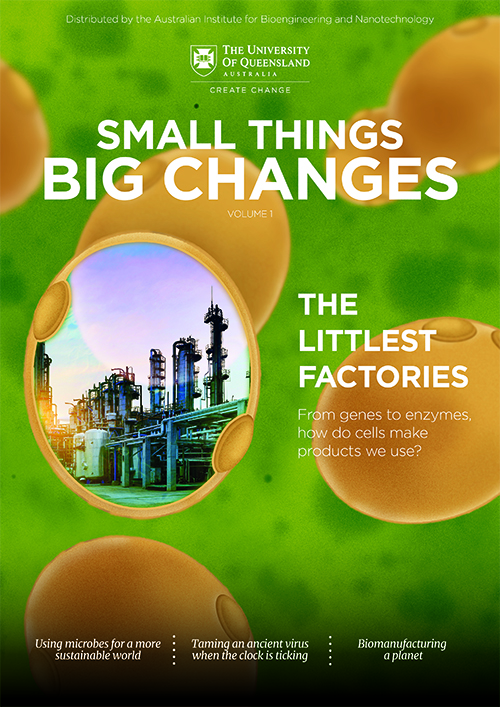The word ‘foundry’ may evoke images of a dark, noisy factory lit only by the glow of molten iron pouring into one casting after another, but in a biofoundry, something very different is going on.
 Here, scientists stand in brightly lit laboratories keeping watch over gently humming machinery while robotic arms dispense droplets of liquid into multitudes of tiny wells, and transfer thousands of samples from one reaction plate to another.
Here, scientists stand in brightly lit laboratories keeping watch over gently humming machinery while robotic arms dispense droplets of liquid into multitudes of tiny wells, and transfer thousands of samples from one reaction plate to another.
In essence, a biofoundry is like a one-stop-shop for synthetic biology R&D, explains Associate Professor Claudia Vickers.
“It’s where we apply the four core steps of engineering to biology: Design, Build, Test and Learn.”
“In the design phase, researchers try to figure out the best way that the DNA componentry of a cell can be modified to achieve a desired result.”
“We might use various different software tools, bespoke knowledge, modelling tools and more to design elements of the project.”
Next comes the building phase
“For this, we use robots that assemble the DNA components,” she explains.
These state-of-the-art instruments can assemble thousands of complex fragments of DNA very quickly, each requiring only a few drops of liquid.
They allow vast combinations of genetic designs to be engineered almost simultaneously, enabling researchers to explore a huge range of variations.
“The robotic system can then transform those genetic components into a living cell,” she says. “It might be a mammalian cell, or a yeast cell or a bacterial cell, or you might use a cell-free system.” In the latter case, only the basic biochemical machinery for reading and carrying out DNA instructions are used to make the product.
Now it’s time to test what you’ve built

“If you’ve modified a microbe, you’ll want to grow cultures to see how they perform, and you’ll probably use some kind of analytical chemistry,” says Associate Professor Vickers.
Here again, robotics are very useful.
“You can grow extremely tiny cultures — maybe only a fraction of a millilitre, at first — and roboticised or semi-roboticised systems enable you to do this in a high throughput way, so you can test thousands of cultures at once.”
Once you’ve identified the useful strains from high-throughput screening, you can then scale up to larger volumes and do more detailed analyses. The outcomes of the testing phase informs the next round of design.
Associate Professor Vickers explains that this is the beauty of a biofoundry: the capability to quickly go through iterative cycles and, in so doing, examine a huge ‘solution space’ and rapidly zero in on the best genetic design to solve the original problem.
The UQ-CSIRO BioFoundry is a high-throughput robotic synthetic biology construction facility housed at UQ’s AIBN and is part of the Australian Foundry for Advanced Biomanufacturing (AusFAB). Joining a global emergence of biofoundries in recent years, AusFAB is an AIBN-led collaboration focused on establishing and integrating Queensland capabilities in synthetic biology for advanced biomanufacturing including biofuels, chemicals, biologics and novel bio-inspired devices. Drop by drop, they are changing the world.

